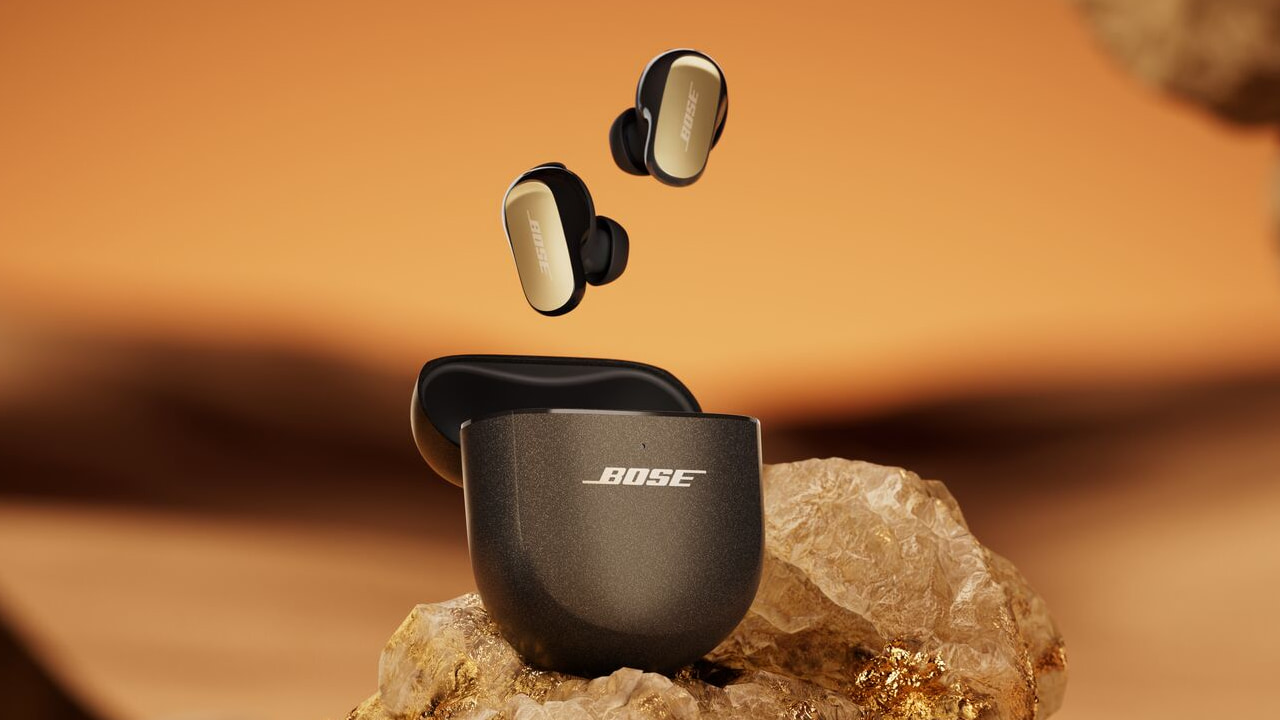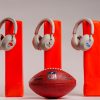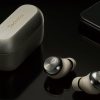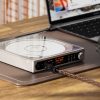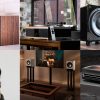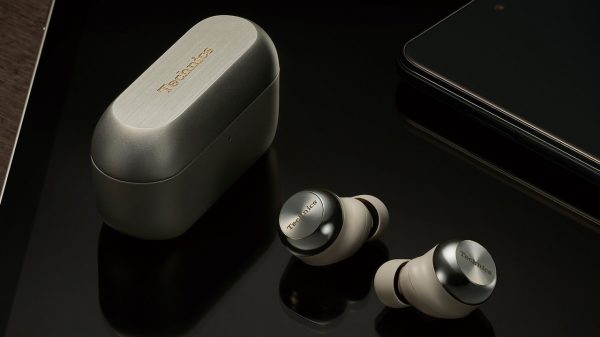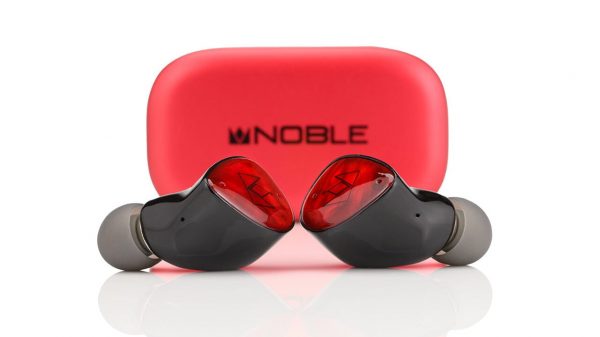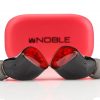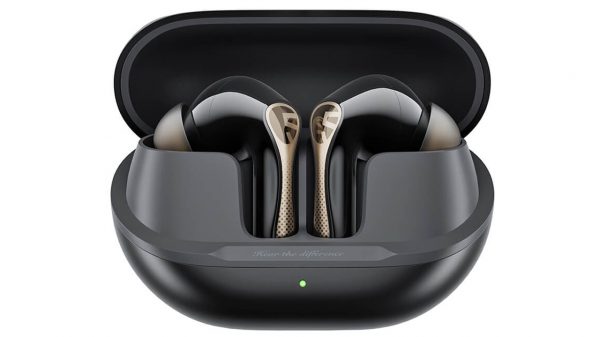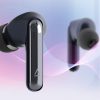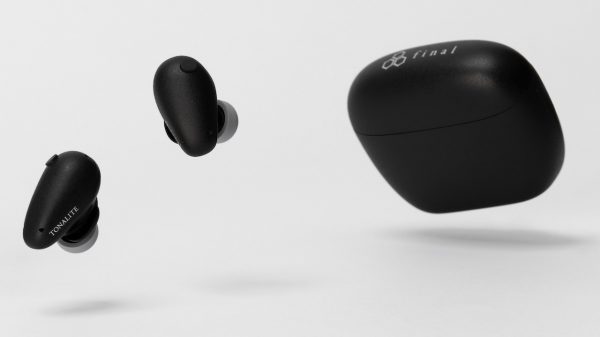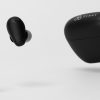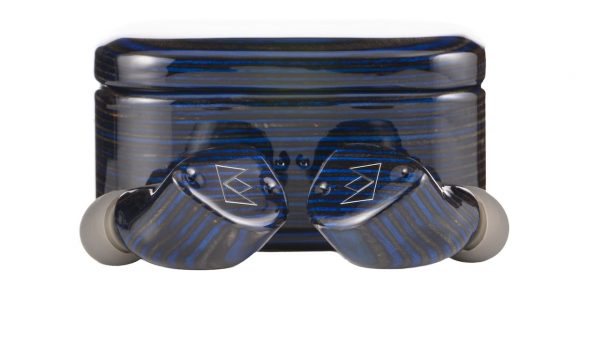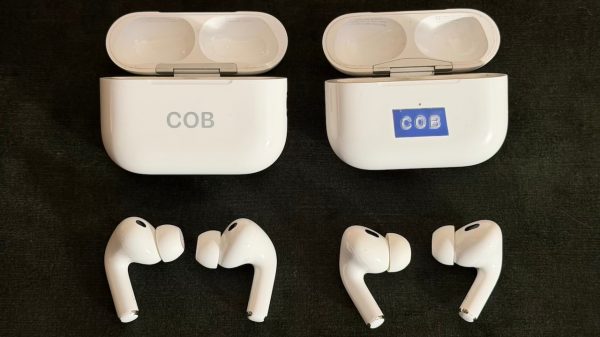It’s hard to believe two years have passed since the original Bose QuietComfort Ultra Earbuds hit the market. Time moves fast in the world of active noise cancellation, but the heavyweight fight between Bose and Sony still rumbles on like a never-ending title bout. Punch, counterpunch, and the occasional low blow — each generation lands harder than the last. Back in 2023, it was the QC Ultra vs. Sony WF-1000XM5. Now, it’s the Bose QuietComfort Ultra Earbuds Gen 2 (aka 2nd gen) stepping back into the ring, squaring off against Sony’s reigning champ. With the over-ear XM6 already out for 2025, Sony’s next in-ear move will likely land in 2026 — meaning Bose has the stage to itself for now.
Design & Build: Subtle Refinements Define the Bose QuietComfort Ultra Earbuds Gen 2
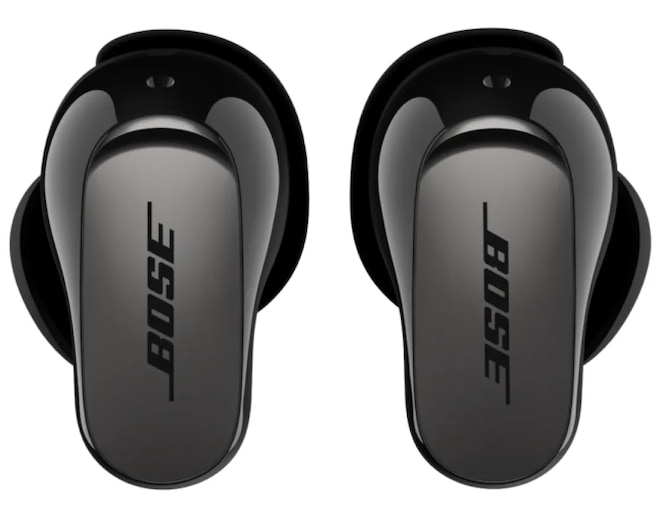
The Bose QuietComfort Ultra Earbuds Gen 2 stick closely to the familiar design language of the original, which itself borrowed heavily from the QuietComfort II. At first glance, they’re nearly indistinguishable — the same compact case, smooth contours, and understated elegance that Bose fans know well. Look closer, though, and you’ll spot a few subtle tweaks. The logo on the case now uses a bolder font, while the earpiece faceplates take on a slightly darker gray tone.
New colorways help differentiate Gen 2 from its predecessor, though our review unit came in the classic gray finish. The stability bands now feature a small nub that locks the earbuds more securely into position, improving comfort and fit during long listening sessions. Otherwise, the dimensions and layout are virtually identical — so much so that the Gen 2 earbuds can charge in a Gen 1 case and vice versa. More than once during testing, I had to pair them just to confirm which generation I was actually holding.
With the externals nearly identical, the obvious question is—what truly makes this a second generation product? According to Bose, the QuietComfort Ultra Earbuds Gen 2 receive a solid list of internal upgrades that separate them from the original.
These include Bluetooth 5.4 with LE Audio support, wireless charging, USB-C audio input, longer battery life, improved ActiveSense (Bose’s branding for adaptive ANC), the ability to disable touch controls via the Bose Music app, a new Cinema Mode for spatial sound, and an AI-based noise suppression system for clearer calls.
Some of these updates, like wireless charging and USB-C audio, are practical quality-of-life upgrades. Others, like the revamped ANC and AI-driven call performance, raise the real question: How big an improvement is it—and if you already own the Gen 1, is it worth upgrading?
I’m going to skip the usual design and comfort rundown, as the QuietComfort Ultra Earbuds Gen 2 are virtually identical to the previous model. The fit, finish, and ergonomics remain unchanged — which means if you’ve read the QC II or original Ultra review, you already know the story. The comfort level is still excellent, and the design remains one of the most refined in the ANC earbud market.
Connectivity: Bluetooth 5.4, LE Audio, and Smarter Integration
Let’s start with what actually separates the QuietComfort Ultra Earbuds Gen 2 from their predecessors — connectivity. The addition of Bluetooth 5.4 and USB-C audio support is where most users will see immediate changes. Perhaps the biggest win here is the long-overdue inclusion of Bluetooth Multipoint, allowing the earbuds to connect to two devices simultaneously — a feature missing from the original Ultra despite its 5.3-capable chipset.
While Bluetooth 5.4 doesn’t dramatically alter performance compared to 5.3, it does bring improvements in security, IoT compatibility, and more importantly, power efficiency. That last part translates to longer battery life, one of the most noticeable benefits of the Gen 2 update. In short, the connectivity refinements may not sound flashy on paper, but they make everyday use smoother and more convenient.
The addition of USB-C audio support is a smart, forward-looking move by Bose. It’s especially useful for those using older devices that don’t natively support Bluetooth LE Audio. By connecting the charging case directly to a source via USB, users can achieve lossless audio transmission to the earbuds — no codec updates or Bluetooth compatibility issues required.
It’s a small but meaningful upgrade, particularly for laptop users stuck with basic SBC-only Bluetooth stacks or anyone trying to extend the life of an older smartphone before upgrading. In short, Bose just gave legacy devices a way to sound a lot better without needing to replace them.
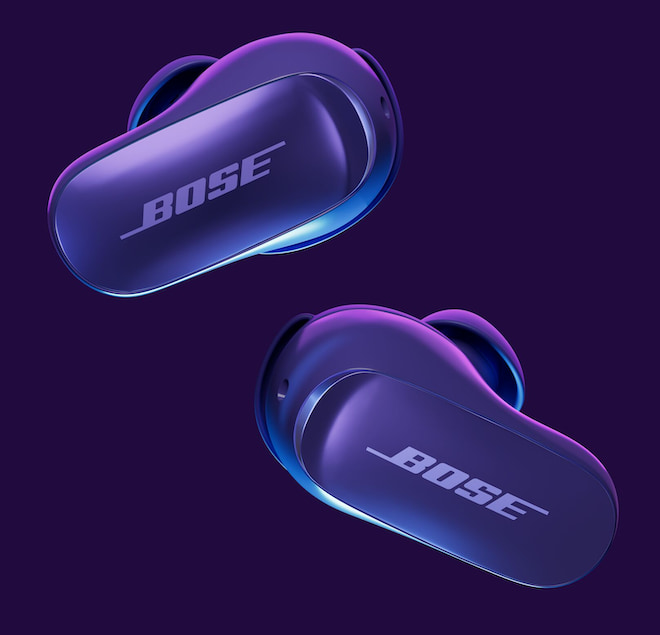
Battery Life: More Endurance Thanks to Bluetooth 5.4 Efficiency
With Bluetooth 5.4 helping streamline power consumption, the QuietComfort Ultra Earbuds Gen 2 deliver a clear improvement in battery performance. The new model offers five to six hours more runtime than its predecessor, stretching total playback time to around 30 hours (up from 24 on the Gen 1).
As expected, enabling all features — ANC, spatial audio, and multipoint — will reduce overall endurance slightly, but even with everything active, I still managed around 28 hours of use before reaching for the charger. It’s not a massive leap, but it’s a welcome refinement that makes daily use noticeably more flexible.
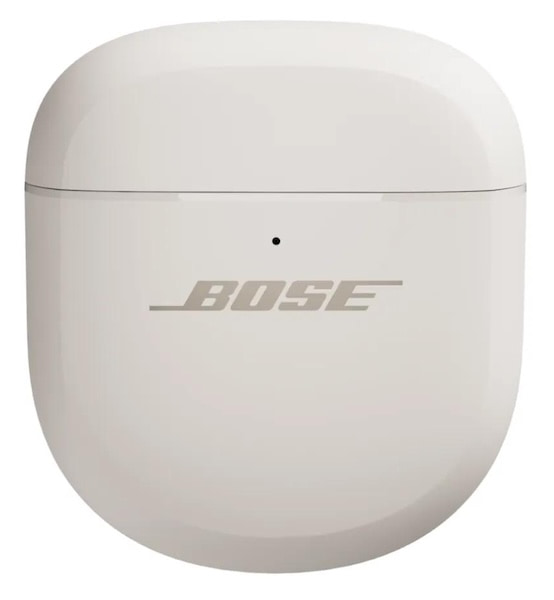
Charging Case: Wireless Charging Finally Comes Standard
This was one of my biggest gripes with earlier generations — wireless charging shouldn’t be a $50 upgrade when nearly every major competitor includes it out of the box. Previously, Bose’s solution was a clunky add-on case cover that enabled wireless charging, but it felt like an afterthought and a cash grab. Thankfully, that changes here.
The QuietComfort Ultra Earbuds Gen 2 now include wireless charging as standard, finally bringing Bose in line with the rest of the premium market. For those with Qi pads by the front door or nightstand, being able to drop the earbuds and phone together without plugging in is a genuine convenience upgrade.
Beyond that, the case capacity remains unchanged, offering two full recharges and a partial third, along with quick charge support — enough to get you through a long day or top up during a short layover without worrying about running dry.
Technology & Performance: Smarter Chips, Stronger ANC, and New Tricks
Most of the QuietComfort Ultra Earbuds Gen 2 updates fall squarely under the “technology” umbrella, with much of the progress tied to new chipsets and software refinements. The result is a more capable and flexible earbud overall. Improvements include stronger ANC performance, the option to disable ANC entirely, AI-based noise suppression for calls, a new Cinema Mode, and even the ability to turn off touch controls through the app.
Some of these tweaks are clearly software-based, but others — like Cinema Mode — depend on new signal processing hardware that wouldn’t have been possible on the previous generation. The ANC system, already excellent in the Gen 1, gets a noticeable yet subtle boost. It now does a better job filtering midrange noise and environmental chatter without compromising sound quality.
In side-by-side listening, the Ultra Gen 2 holds its own against Sony’s WF-1000XM5, matching it in total noise reduction despite offering slightly less passive isolation. That tradeoff actually benefits comfort — the Bose fit feels lighter and more breathable over long sessions, while the Sony’s tighter seal can lead to fatigue after extended use.
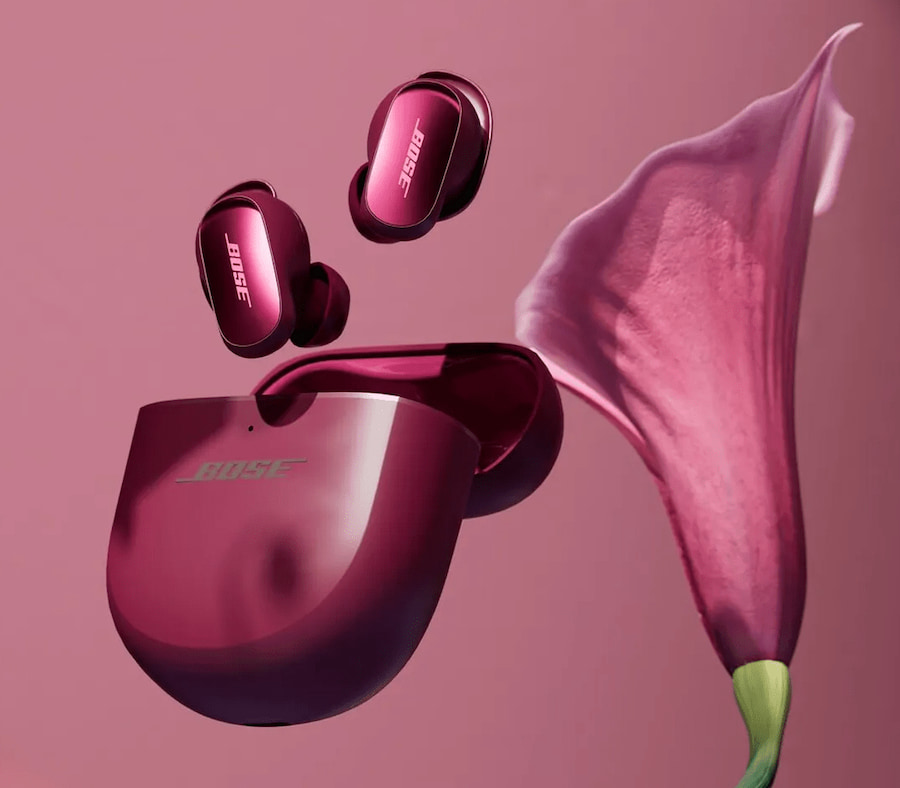
ANC & Cinema Mode: Improved Control, Smarter Spatial Audio
The ANC performance in the QuietComfort Ultra Earbuds Gen 2 continues to impress, maintaining its effectiveness without noticeably altering the overall sound signature. However, one lingering frustration remains — there’s still no way to fully disable ANC. The slider in the Bose Music app can reduce it to a minimum, but even then, background processing remains active.
That means you can’t truly A/B test processed vs. unprocessed sound. Bose does advertise an “ANC Off” option in some materials, but as of this review, that feature isn’t fully realized. Hopefully, a firmware update will deliver a proper on/off switch down the line.
The ANC improvements in the QuietComfort Ultra Earbuds Gen 2 are subtle but measurable. The previous generation already set a high bar, so any progress here was always going to be incremental. Most of the gains come down to a few decibels of extra reduction in the midrange frequencies, which can be tough to notice without proper testing equipment.
The upside is that the Gen 2 maintains the same excellent overall isolation while refining performance where it matters — making everyday environments just a little quieter and conversations around you slightly less intrusive.
On the spatial side, Bose expands its Immersive Audio suite (its term for spatial sound) with the addition of a new Cinema Mode, joining the original Still and Motion modes. Cinema Mode prioritizes dialog clarity while expanding the soundstage width, creating a more theater-like presentation that lifts vocals and enhances midrange intelligibility. It’s a convincing effect with the right content, though — as before — not every track benefits from spatialization. Some recordings sound wider but shallower, so it’s best used selectively with material that’s mixed to take advantage of it.
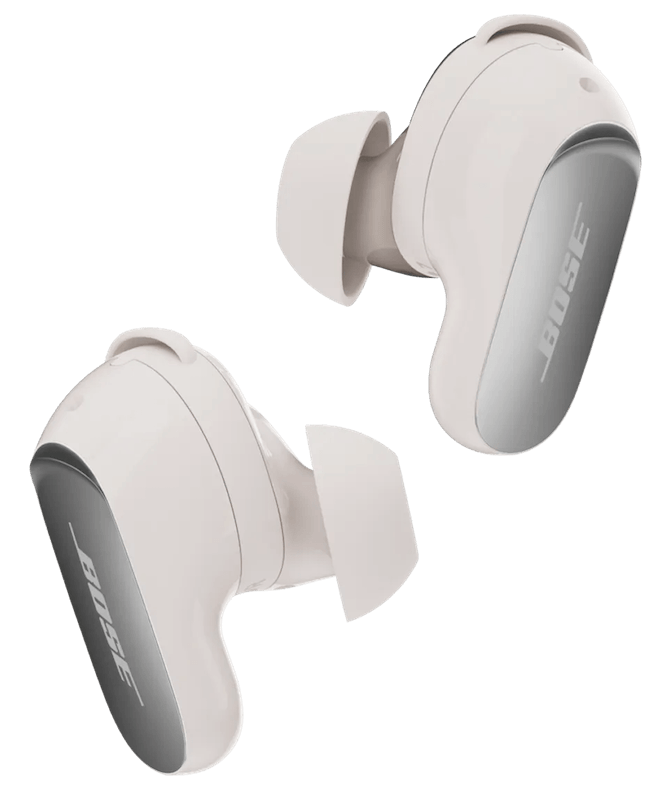
Listening
The default tuning of the QuietComfort Ultra Earbuds Gen 2 takes a clear turn toward the low end, with noticeably more sub-bass emphasis than the first generation. That extra rumble drops back to familiar Bose territory around 120Hz, keeping the mid-bass and lower mids largely unchanged from the Gen 1. Fortunately, with modern DSP-driven tuning, it’s easy to rein things in — using the Bass Reducer EQ preset brings the sound signature closer to the original Ultra’s more balanced presentation.
The added sub-bass punch feels like Bose responding to market trends — consumers want a bit more depth and warmth — but the boost might be too much of a good thing for purists. Thankfully, EQ adjustments tame it easily. The mids, meanwhile, take a slight back seat; guitars and lower vocals can feel recessed, flanked by stronger bass and upper-mid emphasis.
A lift in the 2–4kHz range brings clarity and presence to strings and higher voices, while snare hits pop forward just enough to give tracks some bite.
Up top, the lower treble carries enough energy to balance out the weighty low end, giving percussion a satisfying snap and cymbals a natural shimmer. There’s a touch of air, but not much sparkle — typical for a closed-back ANC design. The overall soundstage remains intimate, with a bit more width than depth.
Once EQ is applied, imaging tightens up, the soundstage gains structure, and instrument placement becomes cleaner, particularly in the lower registers where the boosted bass otherwise tends to blur positioning.
In short, Gen 2 sounds fuller and more modern, but a little EQ still goes a long way toward finding that classic Bose balance.
Call Quality: Bose Finally Catches Up to Apple and Sony
One of my biggest complaints about the QC II and QuietComfort Ultra Gen 1 was that call quality hadn’t meaningfully improved — noise suppression lagged behind competitors, and external sounds often bled through. The good news is that the Gen 2 finally delivers. Bose’s new AI-based noise reduction does a far better job at filtering out distractions, particularly wind noise and constant low-frequency hums.
Background sounds like TV chatter, doorbells, or crying infants can still sneak through occasionally, but they’re now significantly subdued, allowing voices to remain front and center. It’s a noticeable step forward — enough that the QuietComfort Ultra Earbuds Gen 2 now stand shoulder to shoulder with Apple and Sony when it comes to call performance. For anyone relying on their earbuds for regular calls or meetings, this is a meaningful upgrade.
The Bottom Line
The Bose QuietComfort Ultra Earbuds Gen 2 don’t reinvent the formula — they refine it. For anyone shopping for top-tier noise-cancelling in-ears, these absolutely deserve a spot on your shortlist. The combination of class-leading ANC, improved call quality, longer battery life, and wireless charging makes them one of the most complete packages available right now. The bass-forward tuning adds more weight and energy to the sound, though some may prefer to dial it back via EQ for a more balanced listen.
That said, upgrading from the QC II or original Ultra isn’t that clear cut. If your biggest frustration was the lack of wireless charging, it’s cheaper to buy the add-on case and call it a day. The Gen 2’s upgrades — better call clarity, stronger sub-bass, minor ANC refinements, and added convenience — are meaningful but not revolutionary.
Pros:
- Excellent ANC performance, now slightly refined
- Noticeably improved call quality
- Longer battery life (≈30 hours total)
- Wireless charging now standard
- USB-C audio support for lossless playback
- Multipoint connectivity
Cons:
- No true ANC “off” mode
- Bass-heavy tuning out of the box
- Minor cosmetic differences from Gen 1
- Upgrade value depends heavily on use case
Where to buy:
Related Reading:
- Noble Audio Launches FoKus Prestige Encore: Luxury Wireless Earbuds With High-End Design And Sound
- AirPods Pro 3 Review: Better Features, Worse Sound — Apple’s Backward Step In Audio
- Bose QuietComfort Ultra Earbuds 2nd Gen: Same Silence, Smarter Sound
- Bose Ultra Open Earbuds Review: Too Expensive Or AirPod Killers?

